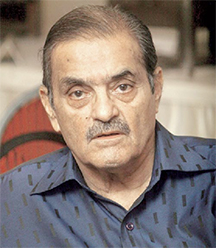(Reuters) – To cricket outsiders, the “Gentleman’s Game” often conjures the image of a slow-paced summer pastime, where players barely break sweat during matches that drag on for days.
The sickening head injury that left Australia batsman Phillip Hughes in critical condition yesterday, however, was a brutal reminder of the sport’s ferocity.
Modern-day cricketers wear helmets and an array of protective equipment but the risks are real when players face up to balls that are roughly the same size as a baseball but harder and heavier, often travelling at speeds of over 140kph (87mph).
The extent of Hughes’s injury may not be known for days, but there is a long list of cricketers who have suffered horrific injuries that have been career ending and sometimes fatal.
In the infamous Bodyline Series in 1932-33, the Australian wicketkeeper Bert Oldfield had his skull fractured when he was hit by a ball from English fast bowler Harold Larwood.
In the 1960s, Indian captain Nari Contractor was hit in the head by a ball from West Indian paceman Charlie Griffith.
Contractor was unconscious for six days and needed a blood transfusion to survive but never played international cricket again.
Bob Willis fractured Rick McCosker’s jaw in the 1977 Centenary test and in 1986 Mike Gatting’s nose was smashed by Malcolm Marshall.
In 1975, New Zealander Ewen Chatfield swallowed his tongue and stopped breathing after being hit on the temple by English fast bowler Peter Lever during a test match.
His life was saved by English physio Bernard Thomas, who sprinted onto the field and administered CPR.

Staying true to the cricketers’ gentlemanly code, Chatfield later said of Lever: “It wasn’t really his fault. I should have been able to get out of the way.
“He’s a very nice fellow.”
Just two years ago, South African wicketkeeper Mark Boucher lost the lens, iris and pupil in his left eye after a being hit by a bail that flew back off the top of the wicket.
“Having looked at it on YouTube, I don’t like to look at it too much because it freaks me out a bit,” he told cricket website Cricinfo (www.espncricinfo.com). “The bail hit me in the eye and went two centimetres back.”
Other players, however, have not been so lucky.
India’s Raman Lamba died in 1998 after being struck in the temple by a cricket ball hit by a Bangladesh batsman. He was 38.
Pakistan’s Abdul Aziz was struck on the chest by a ball, collapsed and never regained consciousness. He died on the way to the hospital, aged 17.
Cricket authorities have sought to minimise injuries by making protective equipment mandatory for some age groups and batsmen now take to the crease wearing leg guards, elbow pads, gloves and helmets.
Despite the improvements in protective wear, however, the risks to batsmen remain. Hughes was wearing a helmet on Tuesday but was still badly hurt.





